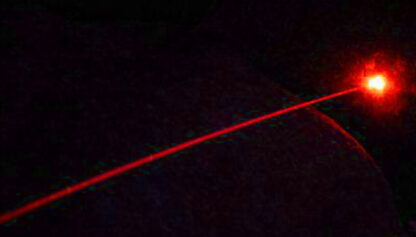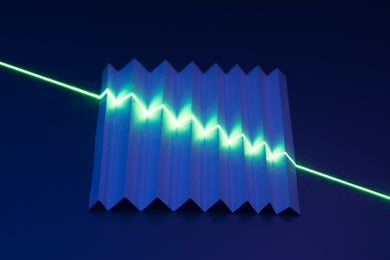Nano-laser electromagnetic interaction (based on PhD in nano-microelectronics)
Researcher and author: Dr. ( Afshin Rashid)
Note: Electromagnetic beam interactions occur in the form of reflection and refraction, absorption and scattering. Reflection and failure are related by Fresnel rules. Therefore, these two are expressed in one section. Of course, in nano-laser applications, failure only plays an important role when a transparent material such as corneal tissue is irradiated. Which of the events (reflection, absorption, scattering) is greater depends on the material of the irradiated tissue and the narrow wavelength of the input.
Wavelength is a very important factor in the narrow electromagnetic interaction of a nano laser because the refractive index, absorption and scattering coefficients depend on the wavelength. Therefore, nano-laser beam absorption and scattering properties of the desired reflection are essential in the performance of the nano-laser. Reflection is of two types: (regular reflection and irregular reflection) When the incoming beam is reflected from a smooth, polished surface with a low altitude that is smaller than the wavelength of the incoming beam, it is called regular reflection. Irregular reflection is a phenomenon that occurs in general for all surfaces. Because none of them have a smooth surface, but in certain cases, regular reflection may prevail over irregular.
Lasers Lasers are rays of electromagnetic radiation. Laser beams can be made from visible light, X-rays, ultraviolet rays or infrared light. Laser is a kind of excited and energetic light that is not seen in normal conditions in nature, but it can be created with special technology and equipment. Lasers differ from ordinary light in that these features give them special capabilities and applications. Laser light is brighter and more intense than light in nature . Laser light can crack the hardest metals and easily pass through hard objects such as diamonds and create holes in them. Low power and ultra-thin beams Other types of lasers can be used to perform very delicate tasks such as surgery on the human eye. Laser light can be subjected with high accuracy He took control and used a continuous beam called a continuous laser or fast blasts called a pulsed laser . Unlike ordinary light, laser light has a perfectly coordinated energy, which creates a lot of power to do different things. The word laser is derived from the initials of the words that describe its properties, which means that light is amplified by the induced emission of radiation . The difference between laser beam and ordinary light is in the important properties that exist in this beam. These characteristics are: coherence, monotony, directness of high intensity. These properties are not seen in ordinary light and these properties are used for various tasks.
Conclusion:
Electromagnetic beam interactions occur in the form of reflection and refraction, absorption and scattering. Reflection and failure are related by Fresnel rules. Therefore, these two are expressed in one section. Of course, in nano-laser applications, failure only plays an important role when a transparent material such as corneal tissue is irradiated.
Author: Dr. ( Afshin Rashid)




